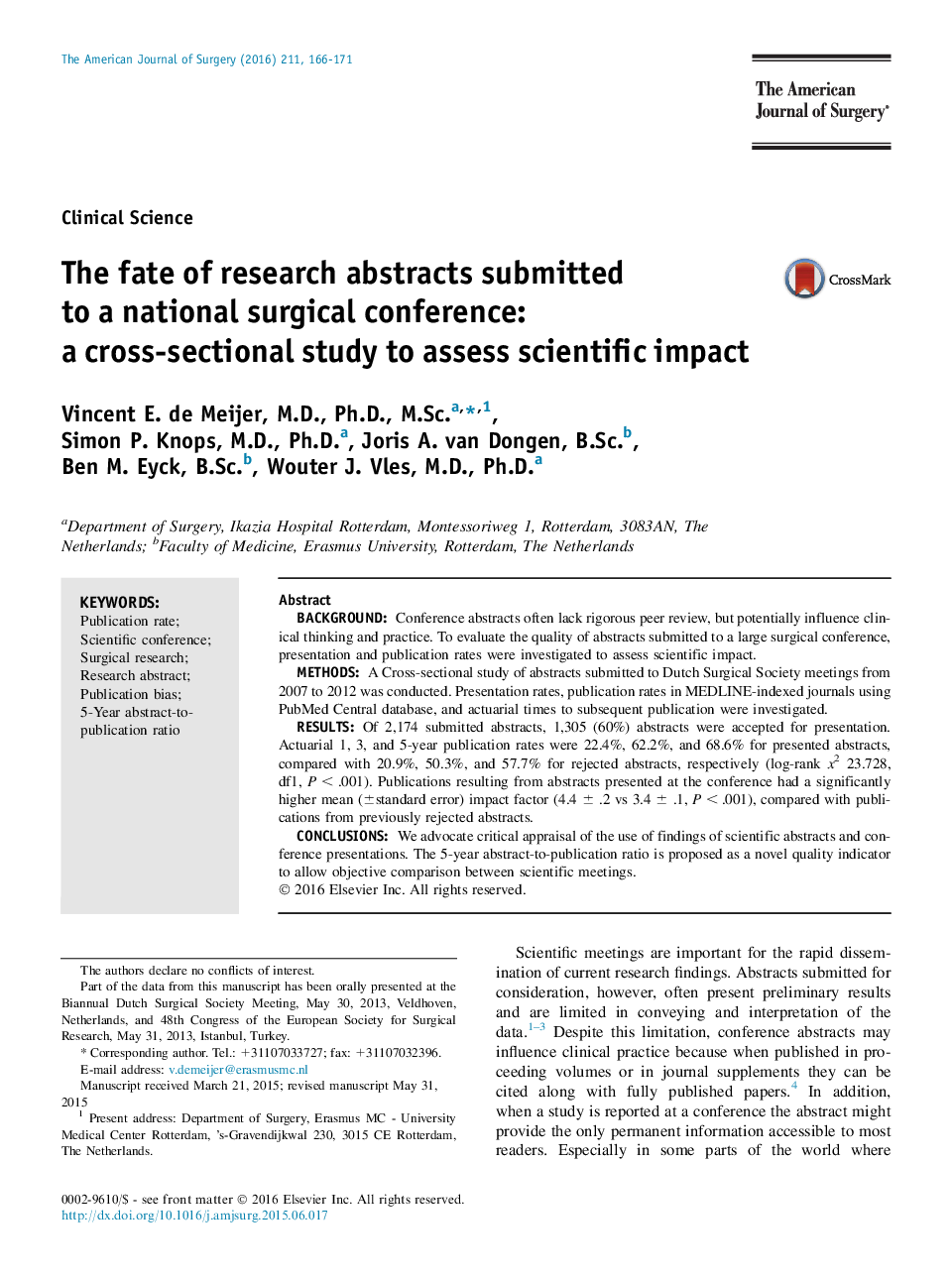| Article ID | Journal | Published Year | Pages | File Type |
|---|---|---|---|---|
| 6250472 | The American Journal of Surgery | 2016 | 6 Pages |
â¢Abstract presentation and publication rates were investigated to assess impact.â¢Two thirds of 2,174 submitted abstracts went on to full publication.â¢Presented research was published more timely and in journals with higher impact.â¢Scientific abstracts and conference presentations need critical appraisal.â¢The 5-year abstract-to-publication ratio is proposed as novel quality indicator.
BackgroundConference abstracts often lack rigorous peer review, but potentially influence clinical thinking and practice. To evaluate the quality of abstracts submitted to a large surgical conference, presentation and publication rates were investigated to assess scientific impact.MethodsA Cross-sectional study of abstracts submitted to Dutch Surgical Society meetings from 2007 to 2012 was conducted. Presentation rates, publication rates in MEDLINE-indexed journals using PubMed Central database, and actuarial times to subsequent publication were investigated.ResultsOf 2,174 submitted abstracts, 1,305 (60%) abstracts were accepted for presentation. Actuarial 1, 3, and 5-year publication rates were 22.4%, 62.2%, and 68.6% for presented abstracts, compared with 20.9%, 50.3%, and 57.7% for rejected abstracts, respectively (log-rank x2 23.728, df1, P < .001). Publications resulting from abstracts presented at the conference had a significantly higher mean (±standard error) impact factor (4.4 ± .2 vs 3.4 ± .1, P < .001), compared with publications from previously rejected abstracts.ConclusionsWe advocate critical appraisal of the use of findings of scientific abstracts and conference presentations. The 5-year abstract-to-publication ratio is proposed as a novel quality indicator to allow objective comparison between scientific meetings.
